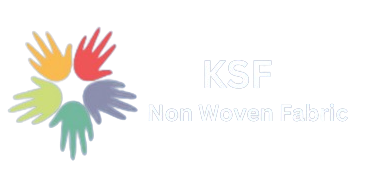Nonwoven fabric has found widespread application in the automobile industry, revolutionizing various components within vehicles. Unlike traditional woven fabrics, nonwoven materials are manufactured by bonding or interlocking fibers together, offering unique properties that cater to the automotive sector’s specific needs. Let’s explore how nonwoven fabrics are utilized in automobiles:
- Interior Components: Nonwoven fabrics are extensively used in the interior of vehicles for upholstery, carpeting, headliners, and door panels. These materials provide durability, comfort, and aesthetic appeal to the cabin environment. Additionally, nonwoven fabrics offer sound insulation properties, reducing noise and enhancing acoustic comfort for passengers.
- Seat Covers and Cushions: Nonwoven fabrics serve as an essential component in the production of seat covers and cushions. The breathable nature of nonwovens ensures optimal air circulation, promoting comfort during extended periods of driving. Moreover, these fabrics are lightweight and easy to mold, facilitating the manufacturing process and contributing to fuel efficiency by reducing vehicle weight.
- Trunk Liners and Cargo Mats: Nonwoven materials are used to line the trunk and cargo areas of vehicles, providing protection against spills, stains, and wear and tear. These fabrics are resistant to moisture, making them ideal for safeguarding luggage and cargo during transportation. Additionally, nonwoven trunk liners enhance the aesthetic appeal of the vehicle’s interior while offering easy maintenance and cleaning.
- Insulation and Noise Reduction: Nonwoven fabrics play a crucial role in thermal insulation and noise reduction within automobiles. These materials are integrated into the vehicle’s structure to absorb and dampen vibrations, minimizing road noise and improving overall ride comfort. Nonwoven insulation also helps regulate interior temperatures, enhancing climate control efficiency and energy savings.
- Air and Cabin Filters: Meltblown nonwoven fabrics are commonly used in the production of air and cabin filters for vehicles. These high-efficiency filters trap particulate matter, pollen, dust, and pollutants, ensuring clean and healthy air circulation within the cabin. Meltblown nonwovens offer superior filtration performance while maintaining excellent breathability, essential for maintaining optimal air quality and passenger comfort.
- Engine Components and Under-the-Hood Applications: Nonwoven materials are utilized in various engine components and under-the-hood applications, such as heat shields, gaskets, and insulation pads. These fabrics provide thermal resistance, chemical stability, and mechanical strength, protecting sensitive engine parts from heat, moisture, and vibration. Nonwoven engine components contribute to the reliability, longevity, and performance of automotive systems.
In conclusion, nonwoven fabrics play a significant role in enhancing comfort, safety, and performance in automobiles. From interior components to engine applications, these versatile materials offer a multitude of benefits, including durability, insulation, noise reduction, and filtration. As automotive manufacturers continue to prioritize innovation and sustainability, the demand for nonwoven fabrics in the automobile industry is expected to grow, driving advancements in material technology and design.


I wholeheartedly agree with all the benefits of nonwoven fabrics mentioned in the blog post. I find the aspects of lightweight, soundproofing, and breathability particularly noteworthy.